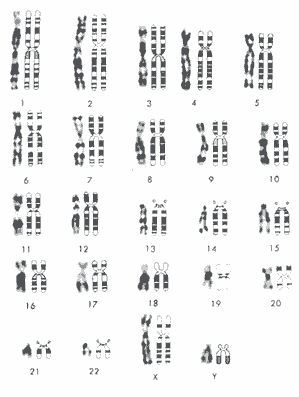Genetic Testing Procedure
In most cases genetic testing is done using blood samples. Other tissues and body fluids like skin, hair, bone marrow, amniotic fluid and semen are also employed.
Genetic test is usually carried out after obtaining an informed consent. A genetics specialist, a medical practitioner or a genetics counselor may order for the tests to be carried out. The cost of genetic testing may range from under $100 to more than $2,000, depending on the type, complexity and on the number of people to be tested. In some countries,
The screening for a particular disorder is carried out on the following samples-
- Blood
- Bone marrow
- Amniotic Fluid
- Hair
- Semen
- Skin
The type of
Different types of body fluids and tissues are employed in genetic testing. Most often the tests are carried out on blood samples. For DNA testing, very little blood, semen or bits of other tissues like skin or bone piece is employed. Even tissue at the bottom end of a human hair is considered adequate.
A sample is sent to the genetics laboratory where the tests are carried out according to the requirement. Changes in the chromosomes, DNA or proteins are reported. The following are some of the popular genetic tests-
1. DNA tests: Genetic tests involve techniques to directly examine the specific genes, as in the case of cystic fibrosis and sickle cell anemia or it may involve ‘linkage analysis’ or indirect testing which analyses the ‘markers’ or stretches of DNA located near the target gene. Linkage analysis is employed when it is difficult for genes to be identified directly, but can be traced to a specific region of a chromosome. Linkage studies require availability of DNA from other affected family members, as a prerequisite.
A DNA sample is usually obtained from a blood sample although it can be acquired from several other tissues as well. DNA testing makes use of ‘molecular probes’ to detect a specific sequence along the length of a person's DNA molecule that is responsible for a genetic disorder. The other method to detect mutations is to slice the DNA into small fragments using restriction enzymes. They are then allowed to run on a gel alongside DNA samples from people with and without the mutation in question.
A combination of molecular techniques like
2. Karyotyping: In this method, blood samples are used to culture lymphocytes, which contain the chromosomes. The chromosomes obtained are fixed on a microslide and are stained using specific dyes. Each chromosome is of a specific size and takes up the dye in a characteristic manner. The chromosomes are then microscopically assessed for aberrations and a photograph is taken.
The arrangement of the chromosomes according to their size and other features, like the position of the centromere, is called a karyotype.
In the case of gene mutations, the chromosomes tend to looks normal when analyzed under the microscope.
KARYOTYPE OF A NORMAL INDIVIDUAL

Courtesy: The Principles of Clinical Cytogenetics.
Edited by Steven L.Gersen, Martha B.Keagle
3. Preimplantation genetic Diagnosis (PGD): Most often it is the desire to weed out diseases from future generations that prompts a person to do genetic testing .PGD is carried out on the embryos that are formed by Assisted Reproductive Technology (ART). A single blastomere from the embryos are removed by micromanipulation and are fixed to a microslide. Probes are used to identify a specific mutation in the embryos. Abnormal embryos are rejected and only the normal ones are selected for implantation.
4. Prenatal genetic testing is carried out on pregnant women. Here a chorionic villi sampling or amniocentesis is usually performed. Amniocentesis is a test carried out between the sixteenth and eighteenth week of pregnancy. During the procedure, the doctor inserts a needle into the woman's abdomen and removes a small amount of amniotic fluid that bathes the fetus. This fluid is then evaluated cytogenetically, biochemically or at the molecular level depending on the requirement.
Chorionic villus sampling (CVS) is a test performed usually between the tenth and twelfth weeks of pregnancy. In CVS, the doctor removes a small piece of the placenta to diagnose genetic problems in a fetus.
Amniocentesis and chorionic villus sampling are invasive and hence they carry a minimal risk of miscarriage.
5. Newborn screening tests which are routine in some countries,are done by obtaining blood sample, obtained by pricking the babies heel and blotting the blood on a special paper.Here the parents are usually informed only if the baby tests positive.







